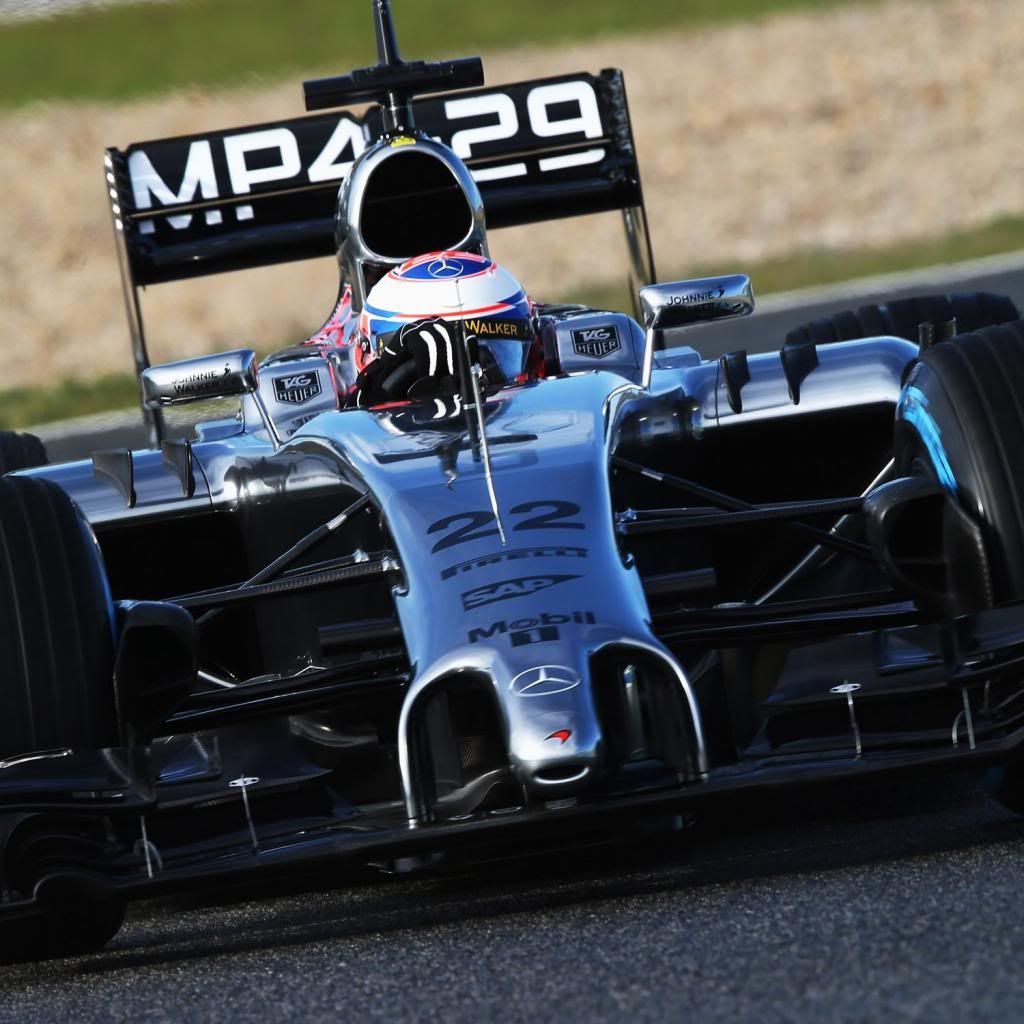2009 rules
5.2.4 Any KERS may only be capable of increasing the stored
energy whilst the car is moving on the track.
Release of power from any such system must remain under the
complete control of the driver at all times the car is on the track.
5.2.4 Any KERS may only be capable of increasing the stored
energy whilst the car is moving on the track.
Release of power from any such system must remain under the
complete control of the driver at all times the car is on the track.
not so.mep wrote:Guys the way the teams use KERS it does not affect the top speed at all. You just reach the speed faster (improved acceleration).
Normally the car has a balance of engine power and drag at end of longest straight otherwise you could increase downforce. KERS is most effective when you use it when you are not traction limited anymore and start to be power limited. As long as you don't use KERS close to top speed which would be bad your top speed is not increased very much. It can be little bit higher because you reach it earlier but from then one you accelerate with very little power left. Might be something like 0,5km/h and just for very short time. Not something worth mentioning.Hangaku wrote:Not so. Assuming the car doesn't reach maximum speed on the longest straight, if the entry to the straight is faster, then the maximum speed reached will also be higher.mep wrote:Guys the way the teams use KERS it does not affect the top speed at all. You just reach the speed faster (improved acceleration).

Yes, but the teams would most probably use it still as an acceleration supplement rather than a top speed regainer. The advantage stays with them from the start of the straight to the end.bosanac1 wrote:not so.
considering they are not going to be hitting revlimiter in top gear as they did with KERS in 2009
There is no way in h*ll that any team worth anything would gear the car to not reach a terminal velocity on the longest straight. That means their gearing would be unnecessarily long and would compromise them on acceleration. That is, of course, save for cross/head/tailwindsHangaku wrote:Not so. Assuming the car doesn't reach maximum speed on the longest straight, if the entry to the straight is faster, then the maximum speed reached will also be higher.
It's not about weight, it's about volume.bhallg2k wrote: I don't understand the logic of running a lesser KERS to save weight.
They can't charge it in the pits. They have to leave the pits uncharged and do the charging on the way to the grid. Someone has already posted the relevant reg on this.raymondu999 wrote:So Red Bull maybe have decided they don't want this braking instability, then they do away with the charging mechanism, instead topping up the battery in the pits, so they can use it in the start.
I don't believe it's that simple this year where you need to set up the car for the DRS, and it's the only thing that seems to fit with Red Bull's strategy. Start line only KERS, well why not use it for Q3 as well? Unless all your gear ratio's are set for a lower top speed but with better acceleration to that speed then I can't think of any reason why you wouldn't just use it in Q3 as well.mep wrote:Normally the car has a balance of engine power and drag at end of longest straight otherwise you could increase downforce. KERS is most effective when you use it when you are not traction limited anymore and start to be power limited. As long as you don't use KERS close to top speed which would be bad your top speed is not increased very much. It can be little bit higher because you reach it earlier but from then one you accelerate with very little power left. Might be something like 0,5km/h and just for very short time. Not something worth mentioning.Hangaku wrote:Not so. Assuming the car doesn't reach maximum speed on the longest straight, if the entry to the straight is faster, then the maximum speed reached will also be higher.mep wrote:Guys the way the teams use KERS it does not affect the top speed at all. You just reach the speed faster (improved acceleration).
But if it's just a start line KERS that charges on track then where's the weight or volume saving? They still need to be able to charge it within a single (parade) lap, so the batteries wouldn't be any smaller, and they would have all the other components to make it work. Also they could still use it in Q3.Just_a_fan wrote:It's not about weight, it's about volume.bhallg2k wrote: I don't understand the logic of running a lesser KERS to save weight.
Battery can be much smaller and lighter if it charged only once.myurr wrote:They still need to be able to charge it within a single (parade) lap, so the batteries wouldn't be any smaller
According to Adam Coopers blog the rules are still the same as they were in 2009 so KERS can be precharged in the pits. This would let Red Bull do away with the brake energy recovery components, but doesn't explain why they didn't use it in Q3.Dmitry wrote:Battery can be much smaller and lighter if it charged only once.myurr wrote:They still need to be able to charge it within a single (parade) lap, so the batteries wouldn't be any smaller